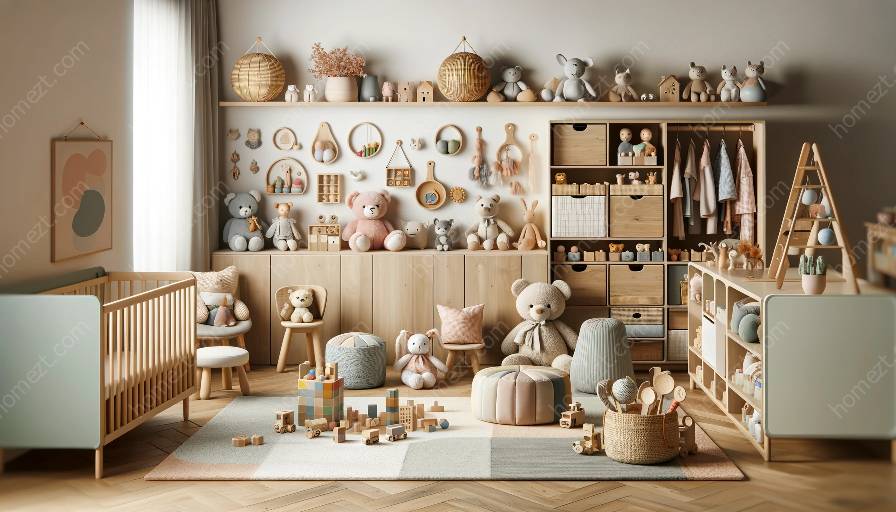Choosing age-appropriate toys is a crucial aspect of childhood development. The right toys can engage, educate, and entertain children while contributing to the overall ambiance of nursery and playroom spaces. Let's delve into the significance of age-appropriate toys and how they intersect with toy selection and the design of nursery and playroom environments.
Understanding Age-Appropriate Toys
Age-appropriate toys are playthings that are suitable for a child's developmental stage. These toys not only match a child's physical and cognitive abilities but also align with their interests and curiosity, aiding in their growth and learning.
Importance of Age-Appropriate Toys
Age-appropriate toys play a pivotal role in shaping a child's development. They can enhance cognitive skills, promote creativity, encourage social interaction, and improve physical coordination. By providing toys that are aligned with a child's age and developmental milestones, parents and caregivers can nurture a child's overall well-being.
Toy Selection and Child Development
When it comes to selecting toys, it's important to consider their developmental benefits. Toys that stimulate problem-solving, creativity, and imagination can foster important cognitive skills. Moreover, interacting with age-appropriate toys can aid in developing a child's fine and gross motor skills, language abilities, and social competence.
Choosing the Right Toys
When selecting toys, it's essential to consider a child's age, interests, and abilities. Infants may benefit from toys that promote sensory exploration and cause-and-effect relationships, such as soft rattles and textured teething toys. Toddlers, on the other hand, may enjoy building sets, simple puzzles, and basic art supplies to encourage their fine motor skills and creativity. For older children, toys that involve problem-solving, role-playing, and physical activity can contribute to their cognitive and physical development.
Toy Safety
Safety is a paramount consideration when choosing toys for children. Age-appropriate toys should be free from choking hazards, sharp edges, and toxic materials. Ensuring that toys comply with safety standards and regulations is essential in safeguarding children during playtime.
Impact on Nursery and Playroom Environments
The selection of age-appropriate toys can greatly influence the ambiance of nursery and playroom settings. Toys that are well-organized, accessible, and tailored to children's ages can create inviting and stimulating play spaces. Additionally, age-appropriate toys contribute to a sense of safety and encourage independent exploration and learning.
Storage and Display
Proper storage and display of age-appropriate toys can enhance the functionality and aesthetics of nursery and playroom environments. Utilizing bins, shelves, and designated play areas for specific age groups helps maintain an organized and visually appealing space for children to engage with their toys.
Flexibility and Adaptability
Flexibility and adaptability in toy selection are crucial for maintaining dynamic and versatile nursery and playroom environments. As children grow, their interests and abilities evolve, necessitating periodic assessment and updating of age-appropriate toys to ensure that they continue to align with developmental needs.
Interactive and Educational Elements
Integrating interactive and educational toys into nursery and playroom environments can enrich children's experiences. From simple puzzles and manipulative toys to imaginative play sets and educational games, these toys not only promote development but also contribute to the overall educational atmosphere of the space.
Conclusion
Age-appropriate toys play an essential role in children's development, and their selection bears significant influence on the design and functionality of nursery and playroom environments. By carefully considering the developmental benefits, safety, and impact on the overall ambiance, parents and caregivers can curate a stimulating and conducive play space for children.



